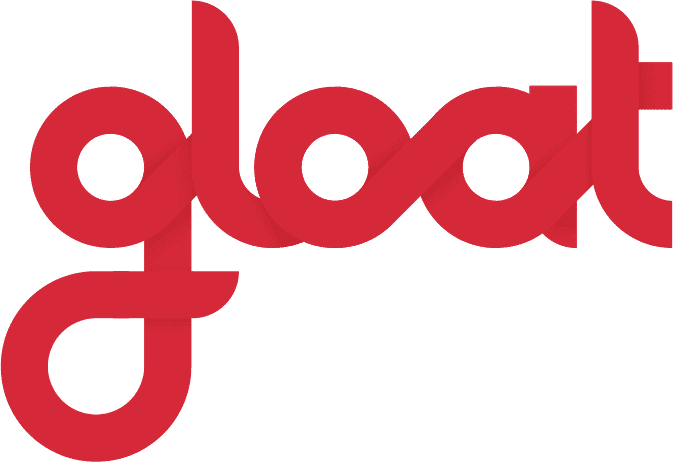Gloat’s next chapter begins with a $90 million Series D
What our new partnership with Generation means for shaping a brighter future of work
Today, many of the issues facing businesses and employees are starker than they’ve ever been. People are leaving companies where their careers have no path forward, and at the same time, hiring freezes—and even revocations of job offers—are becoming increasingly common.
In essence, people and businesses are stuck. These trends, driven by the transition from a pandemic into a possible recession, underscore why Gloat exists. We help employees steer their own careers and accelerate their potential within their own companies. Simultaneously, we help businesses stay agile, giving them the intelligence and tools to redeploy talent, understand skills across their organization and make critical planning decisions. In short, Gloat empowers people to become anything and businesses to achieve anything.
Gloat’s recently closed $90 million Series D will help us expand the global reach of our Workforce Agility platform. By combining our AI-powered Talent Marketplace and Workforce Intelligence, Gloat helps organizations break down silos, analyze thousands of skills at scale, and distill crucial insights for strategic talent decision-making.
What was once relevant for trailblazing companies has now become the baseline mechanism for business survival. Understanding and aptly steering workforces requires a much more granular approach: jobs must be distilled into tasks, roles broken down into skills, and people must be recognized for their abilities, interests, and potential. This pixelization of work is the only way to ensure and maintain business sustainability amid ever-disrupted markets—and Gloat offers not only a way to collect constantly evolving intelligence at this granular level, but also to act on it, at speed and at scale.
As we begin this next phase of our growth, we couldn’t be more grateful for our customers’ continued partnership and advocacy. Many of the world’s largest employers incorporated our platform into their business infrastructure before the pandemic peaked. As a result, companies like Mastercard, Unilever, Schneider Electric, Seagate, Nestlé, Novartis, Standard Chartered Bank, and HSBC have been able to protect, redeploy, restructure, and optimize their workforces. They’ve already saved millions of dollars in talent acquisition costs and unlocked hundreds of thousands of working hours.
In contrast, unprecedented employee attrition beset companies without a talent marketplace or workforce intelligence during the Great Resignation. Fortunately, the current high demand for workforce agility indicates a sweeping realization—the outdated practices of human capital management are behind us. The time is now to enable career development for every individual and bring workforce agility to every enterprise.
Welcoming Generation
As we considered Gloat’s central role in an evolving talent ecosystem, we sought a partner whose vision matched the scope of our own. Generation Investment Management blew us away with their aspirational mission. They are one of the earliest sustainability-focused firms committed to investing in ventures that innovate responsibly and at scale—such as Asana, Toast, Andela, Gusto, and Guideline. Gloat became the first company in Generation’s new Sustainable Solutions Fund IV because we share an underlying goal: shaping a future of work that finally prioritizes the future of the worker.
Several existing Gloat investors also participated in this round, including Accel, Eight Roads Ventures, Intel Capital, and Lumir Ventures. Their continued partnership has been essential to Gloat’s growth, and I couldn’t be more excited to have them in our corner.
Expanding our Advisory Board
Our decisions and perspectives are informed by a distinctive roster of experts in workforce strategy and people management. Today, Gloat’s Advisory Council welcomes two individuals whose insight on the labor market, HR technology, and the future of work will fuel our innovation and refine our go-to-market strategies.
- Joe Fuller, Professor of Management Practice at Harvard University: Fuller co-leads the school’s Managing the Future of Work research initiative, which focuses on trends like automation, artificial intelligence, contingent workforces, the gig economy, workforce demographics, global talent access and utilization, and more.
- Jay Choi, Chief Product Officer at Qualtrics: Choi leads product vision, organic and inorganic growth strategies, product management, user experience, product marketing, and pricing & packaging functions at Qualtrics, a leading experience management company. Prior to joining Qualtrics, he served 16 years in executive roles with Deloitte, 3M, and Danaher.
A tip of the hat to the Gloat team
Finally, I want to thank our Gloaters whose heartfelt dedication and relentless contributions to our mission have made the Anything Workforce a transformational movement. You are leading a new era of work and helping to build a legacy of meaningful change. I am grateful and honored to have your support.




